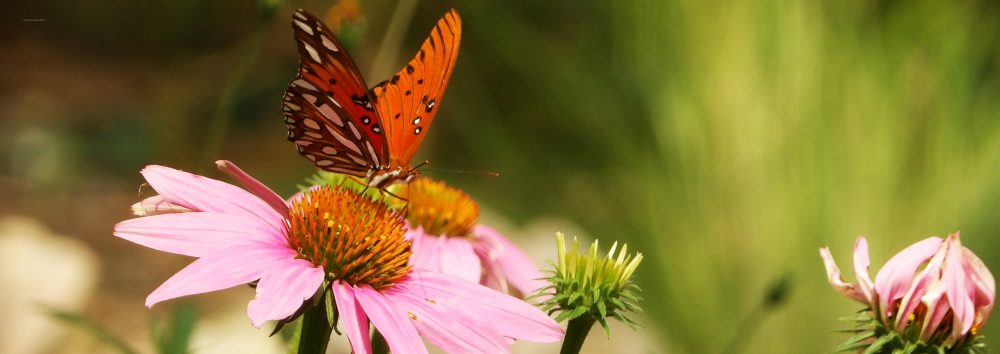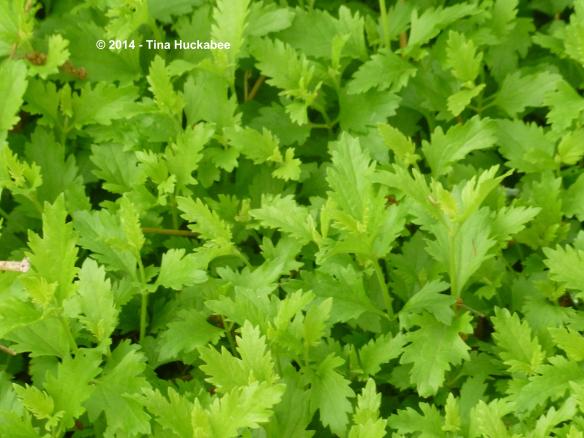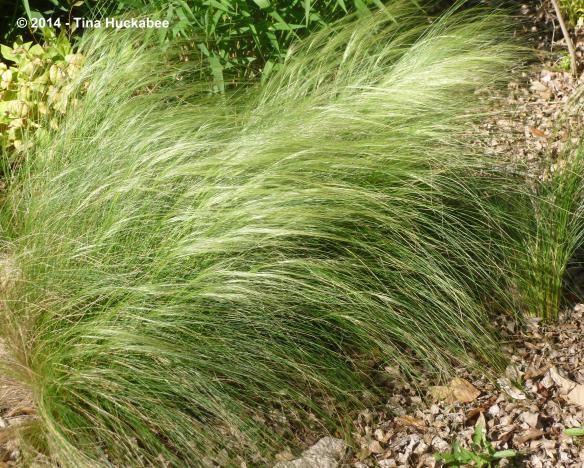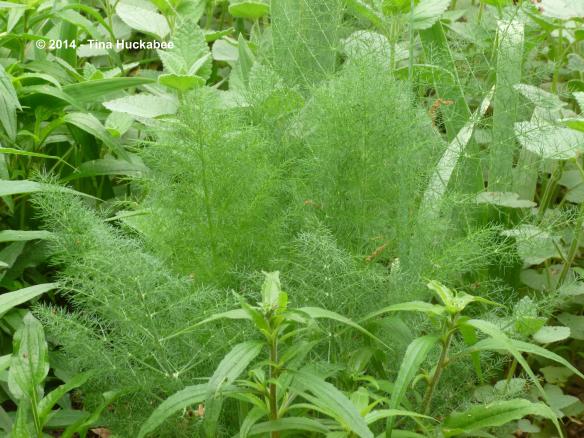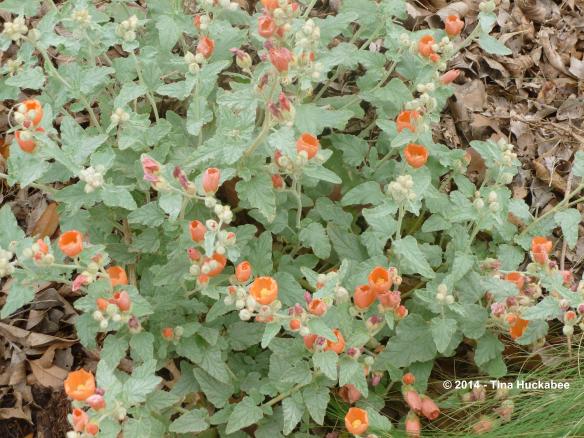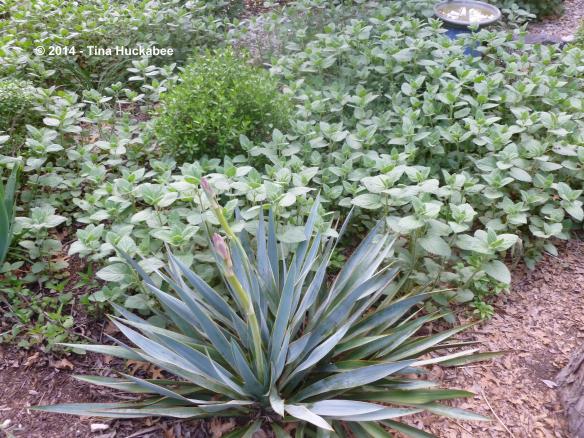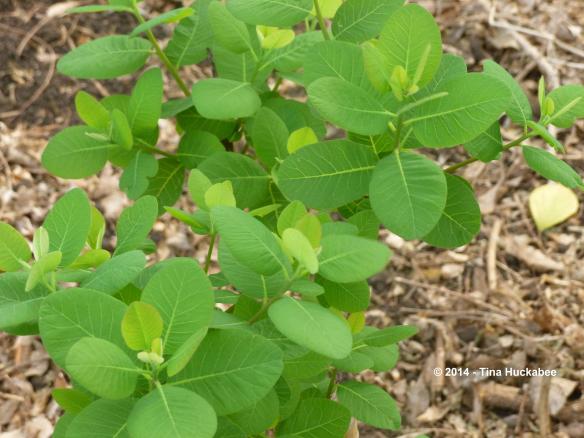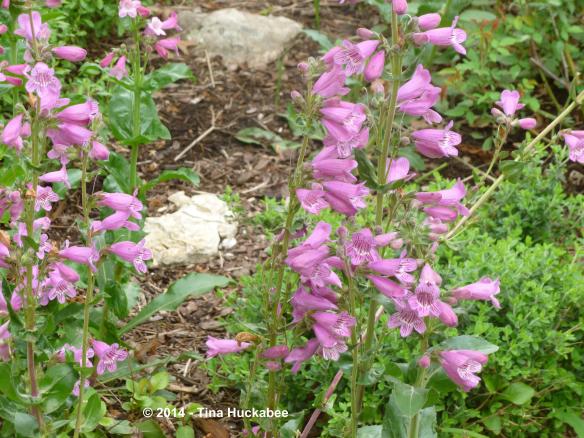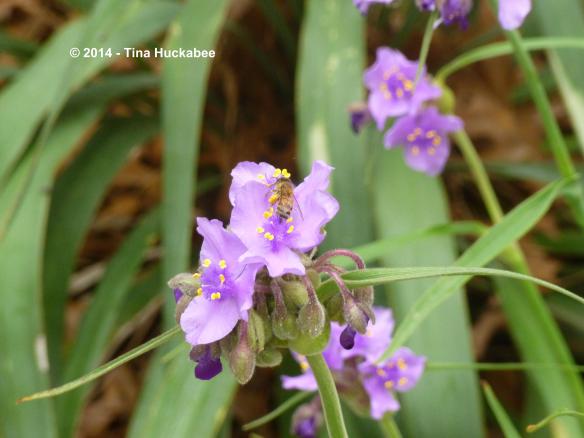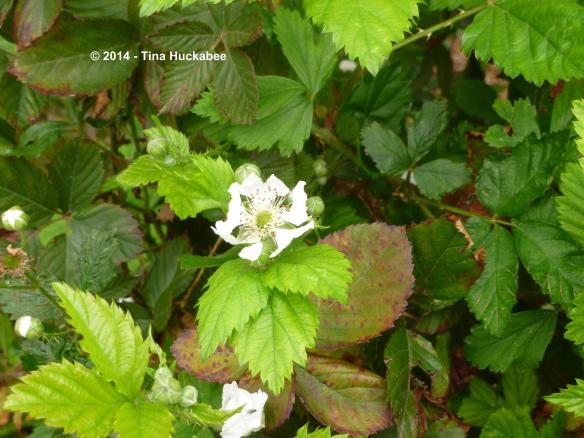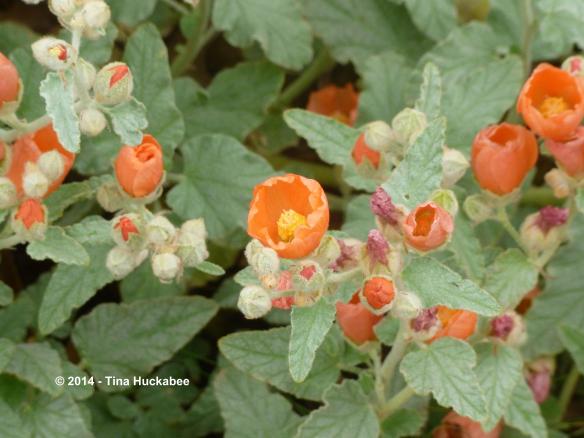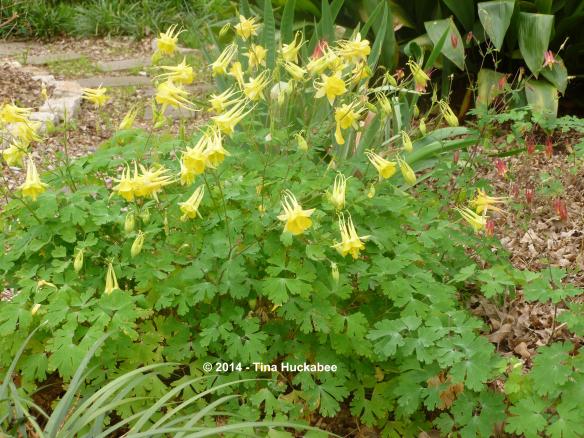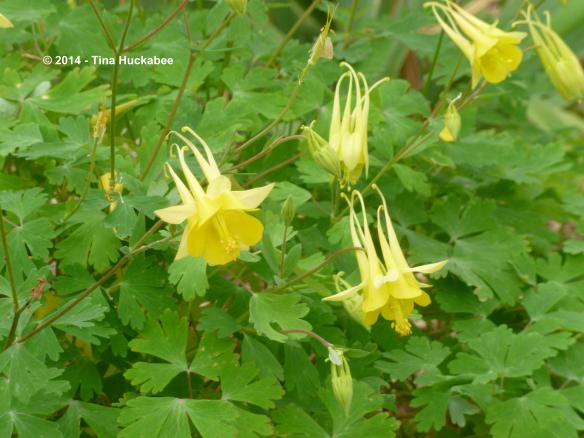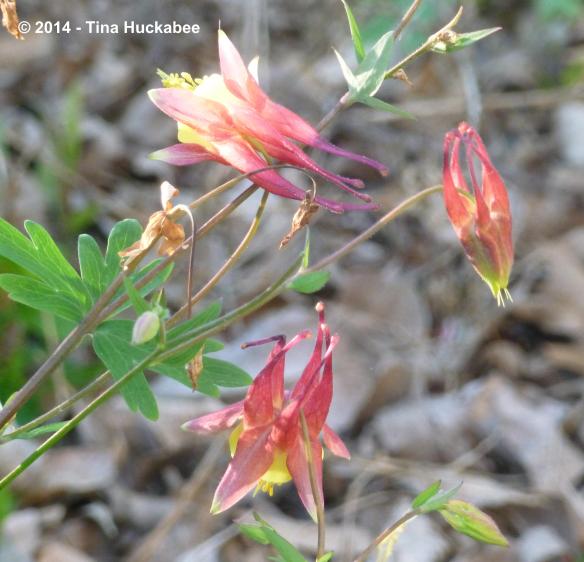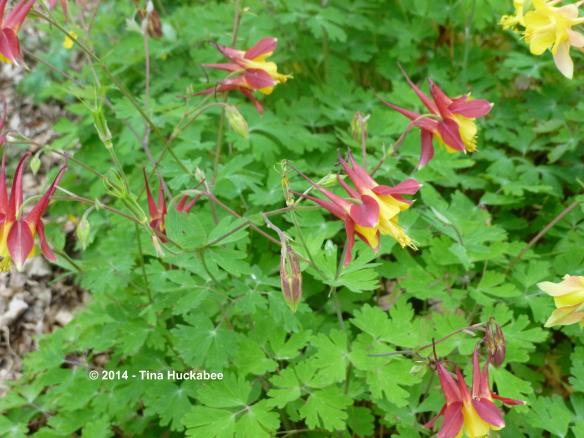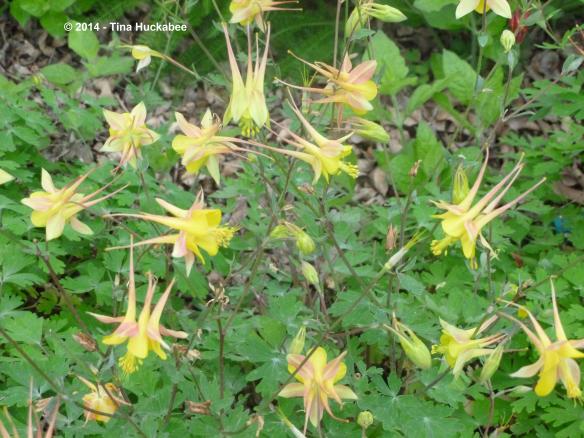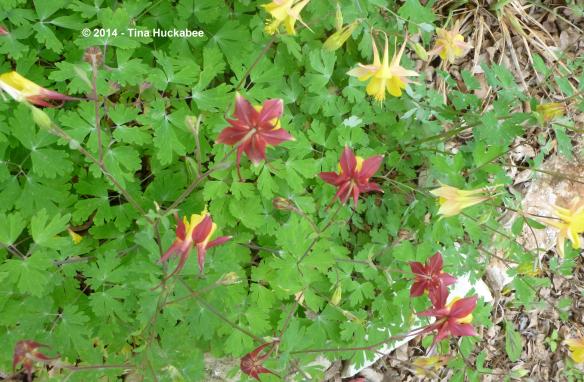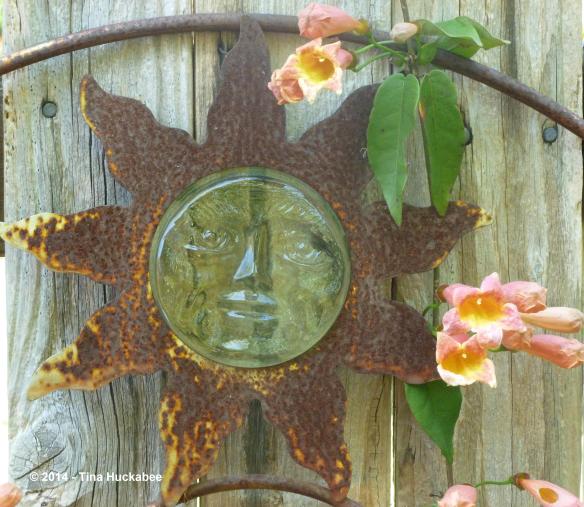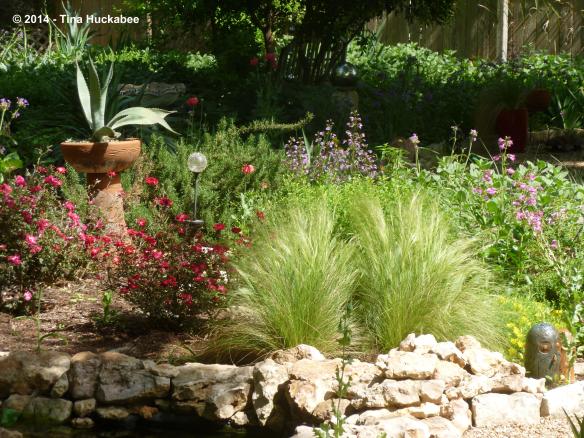Native Texas plants are back in action! March always heralds the time of the natives, and many are eager for the season to begin. They’re budding up and blooming out! It’s true that several of my non-native plants are, or have been, blooming: irises, poppies, and Mexican honeysuckle. But this native Texan appreciates native Texas plants which are lovely and posses the evolutionary chops to weather the weird–no matter the confusion of seasons or the Texas weather patterns.
This sweet thing is a hybrid columbine, a cross between the native Aquilegia chrysantha and another native, Aquilegia canadensis.
I grow the two different columbine species in my garden and the plants hybridize with ease, creating a third alternative, with varying color schemes–sometimes more yellow, sometimes more red. On this particular hybrid, the butter yellow petals and the blushed spurs show off qualities of both types of columbines.
The sunshine-cheery Golden groundsel, Packera obovata, is modeling its spring wears, though with less oomph than in years past.
There’s still plenty of pop with these diminutive blooms; there’s no denying that yellow is bright. But last summer, most of the individual plants in my small patch of groundsels succumbed to the heat and drought. I didn’t realize that the soaker hose buried in this garden had developed a leak. While a couple of plants not far from the groundsels received good soaks when during their twice per month drink, these poor little things got none of the wet stuff. That garden boo-boo occurred during an especially hot and dry spell in August and September, and it wasn’t until the rains returned and the temperatures softened that I discovered that there were few remaining groundsels.
I don’t know if these other rosettes will produce bloom stalks this spring–time will tell–but I’ll certainly keep a better eye on things next summer. Golden groundsel is a tough native plant which doesn’t need babying, but two months with no water and hot temperatures is a bit too much to ask of them. It’s a wonder there are any left!
This terra-cotta beauty is the bloom of the Crossvine, Bignonia capreolata.
This individual vine grows in shade, up a fence, only producing a few blooms each spring. Directly across from this vine, at the opposite end of my garden, grows a second Crossvine, also along a fence. That second Crossvine receives much more sunshine, making many more blooms. For now, all of its blooms are growing over the fence, where my sister-in-law enjoys them.
Oh, well, I’m sure she won’t mind if I walk over to say ‘hi’ to the wayward flowers.
Giant spiderwort, Tradescantia gigantea, are solid, reliable spring blooming natives, dotting gardens and roadsides with purple-to-pink clusters. Each new day as I walk my garden, ever more of these purple clusters appear, petals open for whatever pollinators happen by. Spiderwort can be aggressive, filling a garden with bright color and fleshy green stalks and foliage. But its pollinator power and luscious color are well-worth tolerating its bullying behavior. The thuggy individual plants are easy to yank up and give away!
The first blooms of these plants show up on short bloom stalks, but as the days lengthen, the bloom stalks grow taller, in kind. Many spiderwort plants in my garden reach up to two feet tall.
And, the bloom clusters are stunning.
As Texas ramps up for the new growing season, the natives are restless. Native plants provide sustenance for wildlife and beauty for gardeners and wildflower watchers. Native Texas plants–and there are many for every season and every growing situation–are ready to strut their stuff.
Not only do I celebrate blooming native Texas plants, today is Texas Independence Day! Hats off to the Lone Star State!
